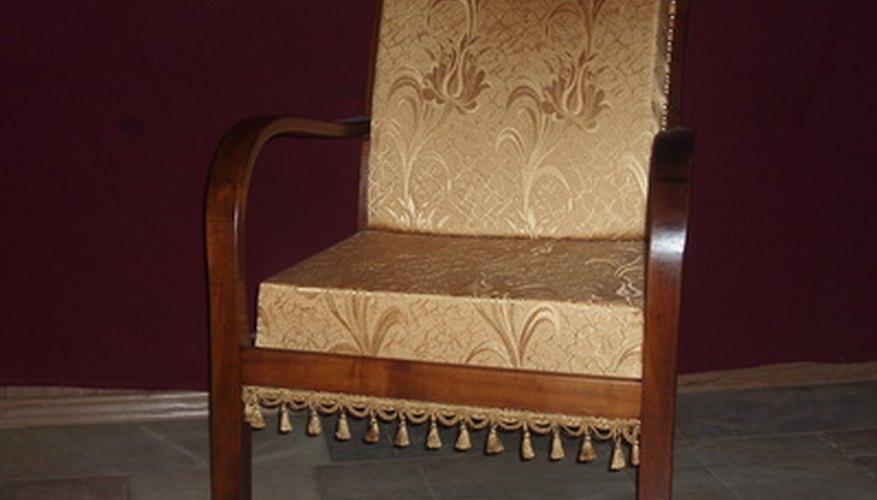A webbing stretcher is a piece of equipment used for stretching webbing, or strapping, over the framework of chairs or sofas during the upholstering process. Using a webbing stretcher allows the materials to be pulled taut while still giving you a free hand to tack or staple the webbing in place. There are three main types of webbing stretcher -- the nongooseneck, the gooseneck and the steel jaw stretcher. The most simple type to make is the nongooseneck, as it can be put together using items that you may already have in your tool shed.
Wrap the leather scrap over one end of the wooden block and staple it firmly in place. Cut away any excess fabric using fabric scissors.
Hammer about a dozen 3.8 cm (1 1/2 inch) nails into the end of the block opposite to the leather. Position the nails in four even rows of three nails. Leave 2.5 cm (1 inch) of each nail showing above the block.
- A webbing stretcher is a piece of equipment used for stretching webbing, or strapping, over the framework of chairs or sofas during the upholstering process.
- Hammer about a dozen 3.8 cm (1 1/2 inch) nails into the end of the block opposite to the leather.
Cut off the heads of the nails using wire cutters, cutting as close to the heads as possible.
TIP
Use real, unfinished leather if possible to avoid colour or varnish rubbing onto your furniture as you use the tool.
WARNING
Always use caution when dealing with sharp objects such as nails and wire cutters.
